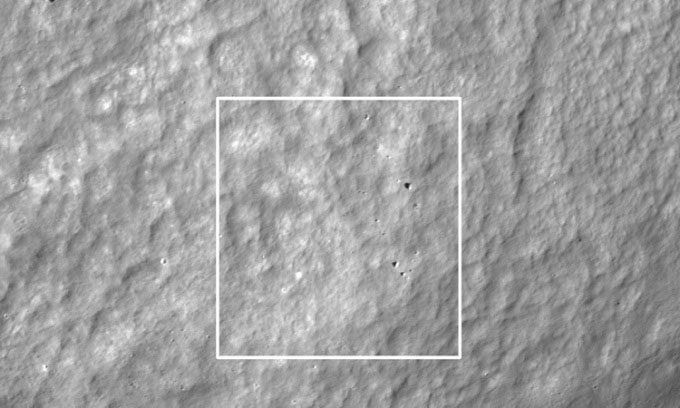The Lunar Reconnaissance Orbiter (LRO) from NASA has discovered debris from the failed landing of Japan’s private lunar lander in April.

The crash site of the Hakuto-R lander on the Moon. (Image: NASA)
On April 26, the LRO captured 10 images of the area surrounding the landing site of the Hakuto-R lander using its Narrow Angle Camera (NAC). The project scientists decided to search for the lost lander. The images shared by the Lunar Reconnaissance Orbiter Camera (LROC) team on May 23 show at least four large pieces of debris and several small changes on the lunar surface at 47.581 degrees north latitude and 44.094 degrees east longitude.
“In the images, there are several bright spots in the upper left corner and a dark spot in the lower right corner. They are located opposite nearby boulders, suggesting there is a small crater or various parts of the lander’s body. This area will be analyzed further in the coming months when the LROC has the opportunity to take more images under different lighting conditions and angles,” the research team stated.
The Hakuto-R lander was carrying a small rover from the United Arab Emirates and aimed to land on April 25, targeting the Atlas crater. However, iSpace, the company behind the mission, lost contact with the lander just minutes before the scheduled landing time. Subsequently, the company confirmed that the Hakuto-R lander could not land safely.
The LRO has previously captured images of other failed landings, including Israel’s Beresheet spacecraft in 2019. If successful, the Hakuto-R lander from iSpace in Tokyo would have been the first privately funded spacecraft to make a soft landing on the Moon. Despite the failure, they are looking to return to the Moon, with plans for their second and third missions slated for 2024 and 2025, respectively.


















































